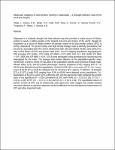| dc.contributor.author | Obala, Jimmy | |
| dc.contributor.author | Saxena, R.K. | |
| dc.contributor.author | Singh, V.K | |
| dc.contributor.author | Kale, S.M. | |
| dc.contributor.author | Garg, V. | |
| dc.contributor.author | Kumar, V. | |
| dc.contributor.author | Sameer Kumar, C.V | |
| dc.contributor.author | Tongoona, P | |
| dc.contributor.author | Sibiya, J. | |
| dc.contributor.author | Saxena, K.B | |
| dc.date.accessioned | 2023-01-19T06:52:28Z | |
| dc.date.available | 2023-01-19T06:52:28Z | |
| dc.date.issued | 2017 | |
| dc.identifier.citation | Obala, J., Saxena, R. K., Singh, V. K., Kale, S. M., Garg, V., Kumar, V., ... & Varshney, R. K. (2017). Molecular mapping of seed protein content in pigeonpea–a drought tolerant crop of the semi-arid tropics. | en_US |
| dc.identifier.uri | http://ir.lirauni.ac.ug/xmlui/handle/123456789/477 | |
| dc.description.abstract | Pigeonpea is a uniquely drought and heat tolerant crop that provides a major source of dietary protein to nearly a billion people in the tropical and semi-arid tropics of the world. Despite its importance as a source of dietary protein the genetic control of its seed protein content (SPC) is poorly understood. The present study used high density linkage maps to identify quantitative trait loci (QTL) associated with SPC and its relationship with 100-seed weight (HSW), seed yield (SY), days to first flower (DTFF) and growth habit (GH). Five F2 mapping populations segregating for SPS including ICP 11605 × ICP 14209, ICP 8863 × ICP 11605, HPL 24 × ICP 11605, ICP 5529 × ICP 11605 and ICP 8863 × ICPL 87119 were genotyped using genotyping-by-sequencing and phenotyped for the traits. The average inter-marker distance on the population-specific maps varied from 1.6cM to 3.5cM.On the basis of the population-specific and consensus linkage maps, 48main effect QTLs (M-QTLs)with phenotypic variance explained (PVE) ranging from 0.7 to 23.5% were detected across five populations, of which 15 M-QTLs were major (PVE≥10). Twenty seven of the M-QTLs could be collapsed into six consensus QTL regions. In addition, 34 epistatic QTLs (E-QTLs) with PVE ranging from 6.3% to 69.8% were detected across populations. Co-localization of M-QTLs and E-QTLs affecting SPC and the agronomic traits explained the genetic basis of the significant (P < 0.05) correlations of SPC with HSW (r2 = 0.22 to 0.30), SY (r2 = -0.18 to -0.28), DTFF (r2 = -0.17 to -0.31) and GH (r2 = 0.18 to 0.34). The quantitative nature of genetic control of SPC and its relationship with agronomic traits suggest that marker-assisted recurrent selection or genomic selection would be effective for the simultaneous improvement of SPC and other important traits | en_US |
| dc.language.iso | en | en_US |
| dc.publisher | : InterDrought | en_US |
| dc.subject | seed protein | en_US |
| dc.subject | Molecular mapping | en_US |
| dc.subject | drought tolerant crop | en_US |
| dc.title | Molecular mapping of seed protein content in pigeonpea – a drought tolerant crop of the semi-arid tropics | en_US |
| dc.type | Article | en_US |

